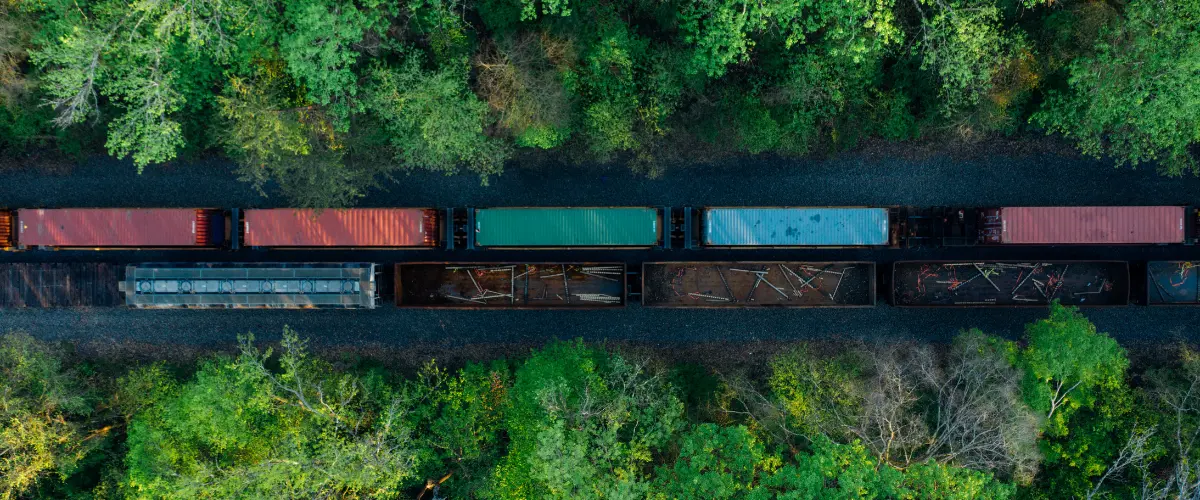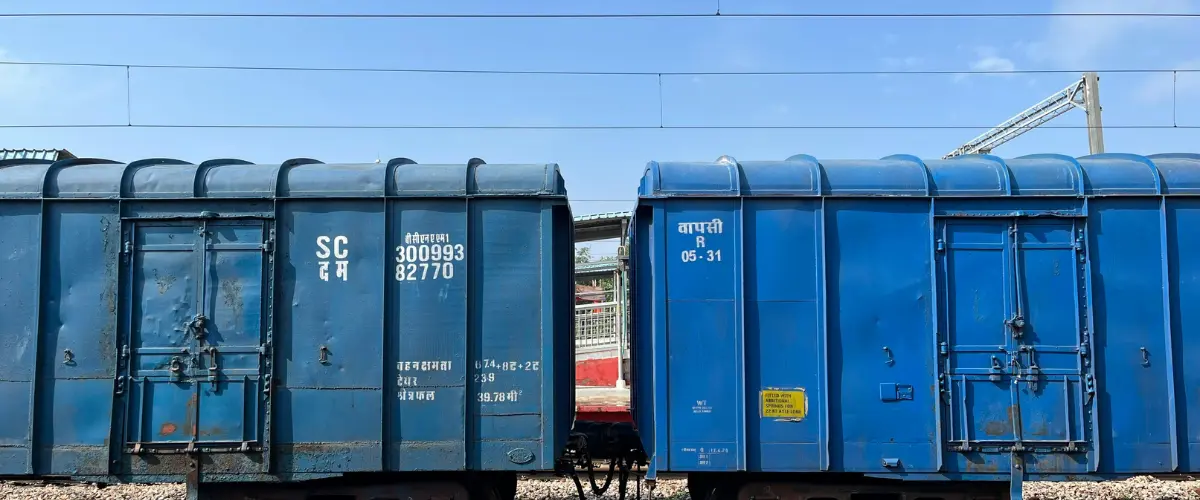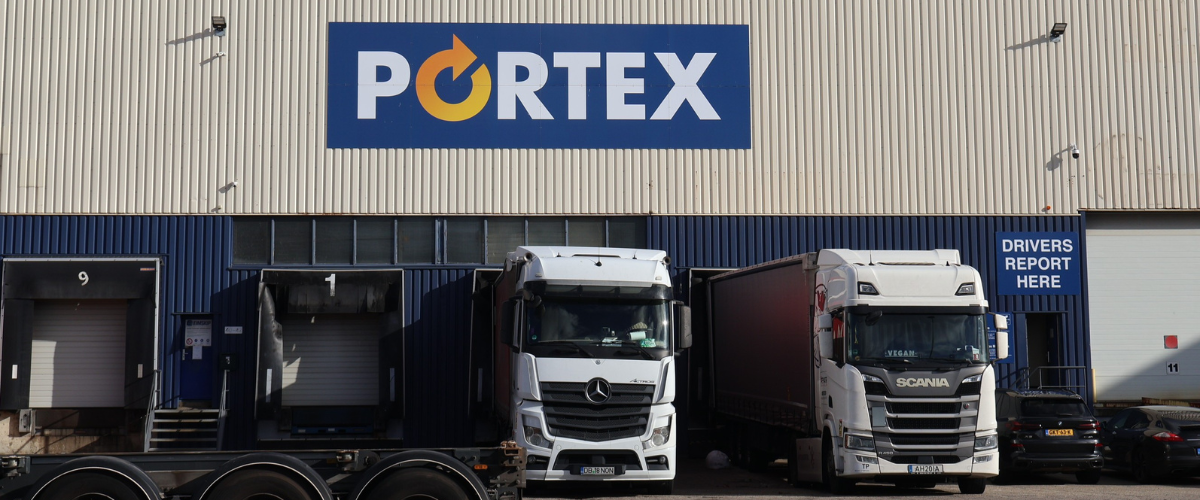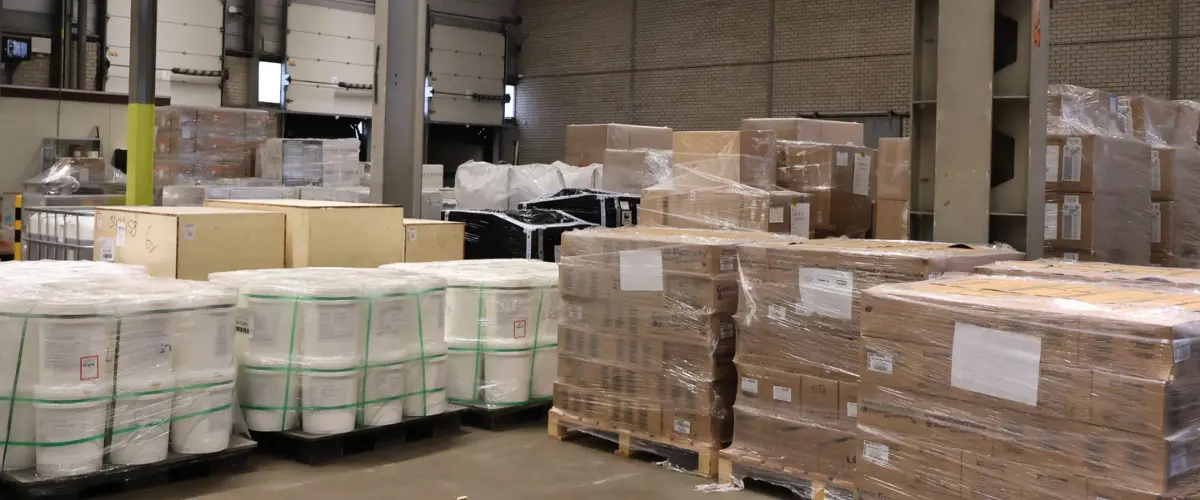Paula
Why rail transport is key to modern logistics
In a world where logistics efficiency, emissions reduction, and cost stability are more important than ever, rail transport from Rotterdam has become a strategic pillar for many supply chains. Capable of moving large volumes with a low carbon footprint and a minimal accident rate, shipping by train is a solid alternative to trucking or ocean freight – especially on long, intermodal routes. Whether you’re looking to reduce CO₂ emissions or stabilize delivery times, to ship by rail from Rotterdam is a forward-looking choice.

What is rail transport and how does it work?
Rail shipment consists of the movement of goods by specialized trains operating between logistics terminals. These terminals acanvare connected by a national or international rail network, and allow containers or wagons to be loaded and unloaded safely. All this is usually managed with the help of a logistics operator or specialized forwarder.
When Is Rail Transport the Recommended Option?
- Large volumes and weights
- Long overland distances
- Bulk Cargo
- Intermodal Transportation
- Safety and Stability
- Sustainability
- Reliability in adverse weather

How Does Train Freight Work?
Here are 6 steps to help you ship by rail successfully:
Step 1: Goods Pick-Up
- A truck collects goods from your factory, warehouse, or supplier.
- If needed, goods are brought to a cross-dock center.
Step 2: Container Stuffing
- Goods are loaded into a shipping container at a warehouse.
- The container is sealed and prepared with proper documentation.
Step 3: Delivery to Departure Terminal
- A truck brings the container to the rail terminal.
- Terminal access must be booked ahead of time.
Step 4: Rail Transport
- The container is loaded onto the train and shipped by rail to the destination terminal.
- Routes and schedules are usually fixed (e.g., Rotterdam to Madrid takes 3-4 days).
Step 5: Arrival and Unloading
- At the destination terminal, the container is unloaded from the train.
- A truck picks it up and delivers it to the destination (e.g., a warehouse or client location).
Step 6: Container Return
- If the container is rented, it must be returned to a container depot or terminal.
- Failure to return it on time can incur extra fees (demurrage or detention).
What You Need to Know Before Contracting Rotterdam Rail Transport
Before organizing rail transport from Rotterdam, make sure you understand:
- Actors involved: Rail operators (locomotive owners), leasing companies (railcar and container owners), rail terminals and logistics forwarders such as Portex that coordinate the entire process.
- Infrastructure: The available rail network, physical limitations and technical capabilities of the terminals influence shipment planning.
- Containers: They can be owned, rented or left to the logistics operator. They must be suitable for the type of cargo and compatible with intermodal transport.
- Intermodality: The train covers the central section, but it is usually necessary to complement it with trucks for the initial and final sections.
- Documentation and regulations: It is necessary to have the railway consignment note (CIM), and to know the applicable regulations, especially if dangerous goods are transported or borders are crossed.
Knowing all these elements helps to avoid delays, unnecessary costs or complications in the supply chain. Proper planning ensures your shipping by train process runs smoothly.

Who Can Use Rotterdam Rail Transport and Who Provides the Container?
Understanding rail transport starts with two fundamental aspects: Who is allowed to book it? And who provides the container?
Who can book rail transport?
- In most situations, only registered companies can book rail transport directly.
- This is due to legal and operational requirements, such as insurance policies, customs procedures, and terminal safety protocols.
- Private individuals and microbusinesses typically cannot access rail transport directly. Instead, they must work with a freight forwarder or logistics provider that can manage the shipment on their behalf.
Who Provides the Container in Rail Transport?
In most cases, rail operators do not include containers as part of the service unless it’s a full intermodal solution.
There are three common container options for companies using rail transport:
- Rail operator-provided container (only with full-service intermodal transport)
- Leased container from a container leasing company (e.g., CAI, Textainer)
- Owned container (common for large exporters/importers)
Important: Always check if the rate you’re quoted includes the container, or if you need to arrange it separately.
What Are My Options for Booking Rotterdam Rail Transport?
When planning a shipment using rail transport, there are two main ways to book the service. The right option will depend on the size of your shipments, your level of logistics expertise, and how much control you want over the process.
There are two main ways to organize rail transport from Rotterdam:
Option 1: Book Directly with the Rail Operator
Some large companies with in-house logistics teams and previous experience choose to book rail transport directly with the operator.
This option may be suitable if:
- You manage large and frequent shipments (e.g., full trains or multiple wagons).
- You have trained staff who understand customs procedures, terminal coordination, and freight documentation.
- You want to have direct control over routes, delivery schedules, and contractual terms.
However, this route is often complex and not ideal for small or medium-sized businesses. It requires direct negotiation with terminals, independent container management, and the ability to deal with language barriers and varying international regulations.
Option 2: Work with a Freight Forwarder
For most businesses, especially those that ship internationally or infrequently, the most efficient solution is to partner with a logistics provider experienced in rail transport.
Working with a freight forwarder offers several advantages:
- End-to-end coordination: They manage the entire process, including containers, road transport, documentation, and customs clearance.
- Terminal expertise: They handle slot reservations, terminal access, and preparation of required documentation.
- Multilingual and regulatory support: They simplify communication between countries and ensure compliance with local and international rules, essential in international rail transport.
- Door-to-door service: They provide multimodal solutions, combining rail with truck or even ocean freight to optimize costs and transit times.
Partnering with a company like Portex ensures your rail transport runs smoothly from start to finish, with expert handling, transparent pricing, and a fully optimized supply chain.

Additional Considerations for Successful Rotterdam Rail Transport
When planning a shipment via rail transport, there are a few critical operational details to keep in mind to ensure everything runs smoothly, especially regarding cargo handling, customs, and terminal procedures.
Do You Need Cross-Docking?
In many cases, yes. If your goods are not already containerized or require consolidation from multiple sources, they will typically pass through a warehouse or cross-docking facility before being sent to the rail terminal.
At this stage, the cargo is:
- Palletized or consolidated with other goods, if needed
- Loaded into a rail-approved container, following proper weight distribution and safety guidelines
- Sealed and accompanied by the necessary documentation for terminal handover
Using cross-docking ensures that your shipment is optimized for rail transit and compliant with rail terminal requirements.
Maybe also Customs Clearance?
Customs procedures depend on the origin and destination of your shipment:
- Within the European Union: Customs clearance is usually not required, unless you’re shipping to or from bonded warehouses or transporting bonded goods.
- Outside the EU or for bonded transport: Full customs clearance is necessary, including proper classification, documentation, and possibly bonded transit arrangements. A freight forwarder can guide you through this process to avoid costly delays.
Why Choose Portex for Rail Transport from Rotterdam?
At Portex, we specialize in multimodal solutions that integrate rail transport with road and ocean freight to ensure cost-effective and sustainable logistics across Europe.
What sets us apart:
- Expert coordination of every stage – from pick-up to customs and delivery
- In-house knowledge of international railway networks and documentation
- Proven experience on routes like Rotterdam–Spain, Antwerp – Barcelona, and Duisburg-Perpignan
- Strategic warehouse location near the railway infrastructure of Rotterdam, allowing for faster container access, optimized transit times, and a clear operational advantage over competitors
Whether you’re a growing company or an established exporter, Portex makes rail transport simple, secure, and reliable.

Whether you’re planning a one-time shipment or looking to build a long-term rail logistics strategy, our team at Portex is here to help. We offer customized, door-to-door rail transport solutions across Europe and beyond.
